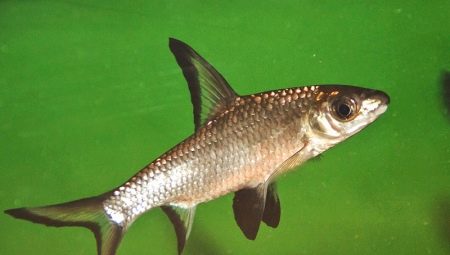Each year, keeping and raising fish is becoming more and more popular. Aquarists, who have long been engaged in this activity, are often not surprised by ordinary fish, now non-standard, unique individuals are in fashion. These include the shark ball - a fish whose appearance does not at all combine with character.
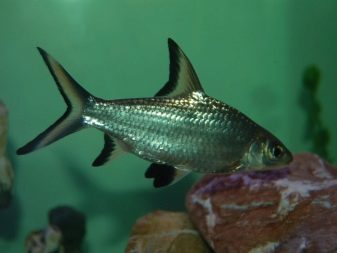
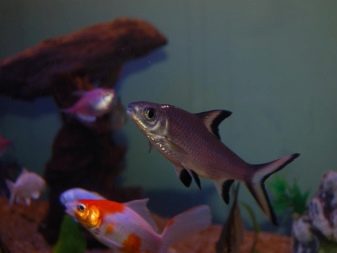
Description
Shark balu also has the name of a ball or barbus, it belongs to the family of cyprinids. This unusual fish was discovered by Peter Blecker, a Dutch scientist. The habitats of the ball are the water basins of Asia, Sumatra, and the Malacca Peninsula. Unfortunately, the fish population is constantly decreasing; today the barbus is considered an endangered species. The reasons for this phenomenon have not yet been clarified, but there are suggestions that dirty water and human activities in these regions are to blame.
Individuals intended for sale are bred artificially. They are delivered from Thailand and Indonesia. Fish live in all water levels, and the basis of their nutrition is insects and their larvae, a variety of algae, small crustaceans.
Adult fish living in the natural environment reaches about 40 cm in length, but aquarium fish will not be more than 25-30 cm. The body of the fish is oblong, slender, on the back there is a fin, immediately causing associations with the shark. The body, as a rule, is silvery, the color is darker above, and below it turns into yellowish.
The scales on the body are pressed tightly against each other, shimmer. The aquarium shark's mouth and eyes are large to track and absorb food faster.The fish moves quickly, so it will definitely need large bodies of water. Ball live for a long time - an average of 10 years.

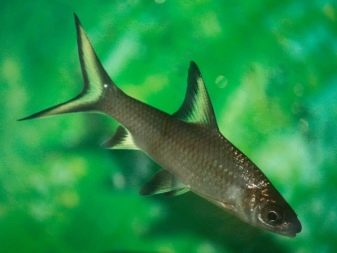
Fish behavior
Most newcomers who first heard the name “shark balu” mistakenly believe that since the “shark”, then the fish must be predatory, angry and very difficult to maintain. Fortunately, all this is far from reality, and the only thing that combines the aquarium ball and the formidable sea predator is the shape of the fin. The rest of the shark barbus is an incredibly peaceful and calm fish that does not perceive everything moving for food.
However, it is important to note that fish of this species are very cowardly. For them, living in an aquarium can be painful, since aquatic creatures are used to living in freedom, where there are large spaces. In addition, the fish themselves are not small in size.
There are many cases where a frightened ball hid and did not appear from shelters for days, or even broke into the glass of the aquarium, bringing itself to death.
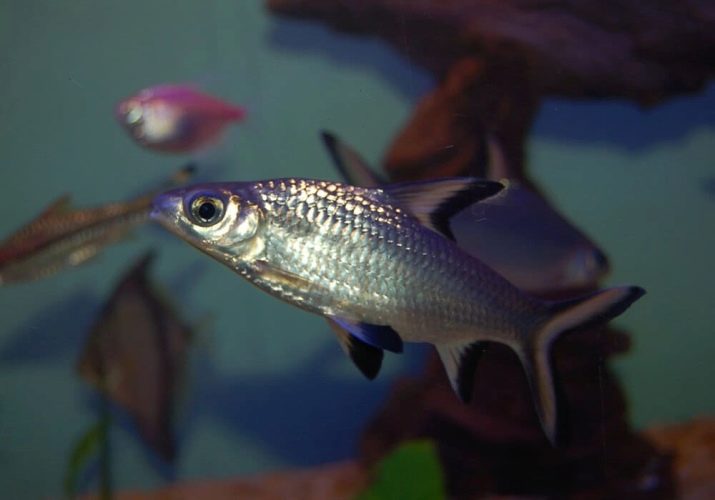
To properly adapt these pets, it will take several weeks. At this time, you can not provoke fish: any loud sound, shouting, knocking on glass will cause genuine horror of the aquarium inhabitants. In addition, you will have to take care of lighting - the fish are very scared by sudden flashes. Another feature of the character of the shark ball is the love of jumping. It is necessary to prepare for the fact that these fish will jump, and very often. therefore the aquarium should always be kept covered.
Barbs are flocks of fish, they need neighbors for harmonious development. Typically, aquarists purchase from 5 to 7 individuals, which form a flock with a strict order.
At the head of such a "family" are the most powerful and hardy fish, smaller fish are obeying the leaders implicitly. Buying just one barbecue, you will doom it to constant stress.
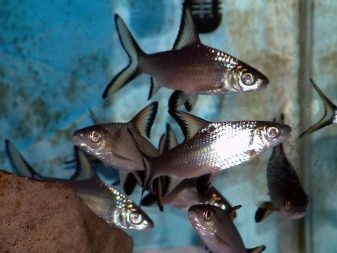
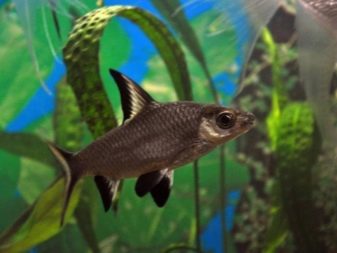
Compatibility
Aquarium balls are peaceful and positive fish, so picking up neighbors is very simple. The main thing is to choose those species that will suit the fish well in temperament, since the ball is quite active. If you settle in a neighbor calm, melancholy fish, their similar activity will be annoying. Little sharks get along best with your own kind as well as with other brisk fish: irises, swordsmen, cardinals, gouras, big parses, corridors. Good "roommate" will be a catfish - he will clean the aquarium without causing any disturbance to the fish.
As for small fish, such as guppies, neonchiki, zebrafish, they will be good neighbors for the ball only as long as the ball does not outgrow them in size. Further, the barbs will no longer be able to distinguish them from their usual food. Also for Shark ball is not recommended to purchase predatory fish such as cichlids, goldfish, piranhas.
It is not a fact that a predator will eat or harm, but it will attack constantly, and in conditions of endless stress and the need to protect itself, the health of the ball will be undermined.
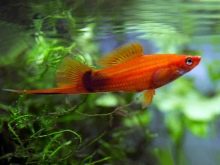
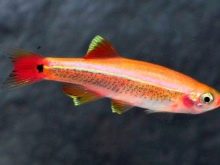
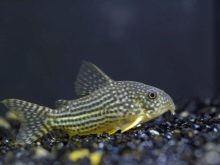
Growing conditions
Sharks to the ball usually do not cause any special difficulties in content, but only if all conditions are selected taking into account their needs. Consider what is needed for the comfortable maintenance of small sharks.
- Aquarium. This, of course, is the main point. Since fish are large in size, at least 300 liters of water will be needed for 5 individuals. If there are more fish, the volume will have to be increased. Equally important is the shape, which must be rectangular. The length of the water tank is at least 1.5 meters. And also do not forget about the presence of a cover. Filters for the aquarium will need powerful, creating strong currents. It is these currents of fish that are overcome in nature.
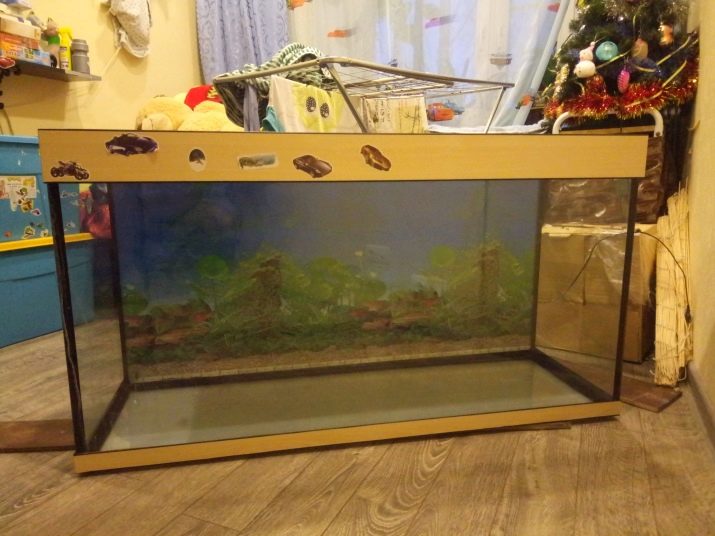
- Water parameters. The liquid in which the barbs will live must be clean. Acidity is best made neutral, within 6-8 pH. Temperature - not less than +22, but not more than +28 degrees Celsius.The hardness index is quite wide - from 5 to 12. A quarter of the water is updated once a week.

- Scenery. Barbs do not have special requirements for plants, but it is better to prefer living ones, since they will produce oxygen, which is necessary for fish. Pick plants with dense, strong stems, otherwise active pets will constantly crush greens, rushing around the entire perimeter of the tank. A great choice will be Javanese fern, different types of mosses, elodea, cryptocoryne. At the bottom, you can put a few snags, pebbles, make artificial grottoes or waterfalls.
But you shouldn’t be too zealous for the decor and plantings - such fish value space more.
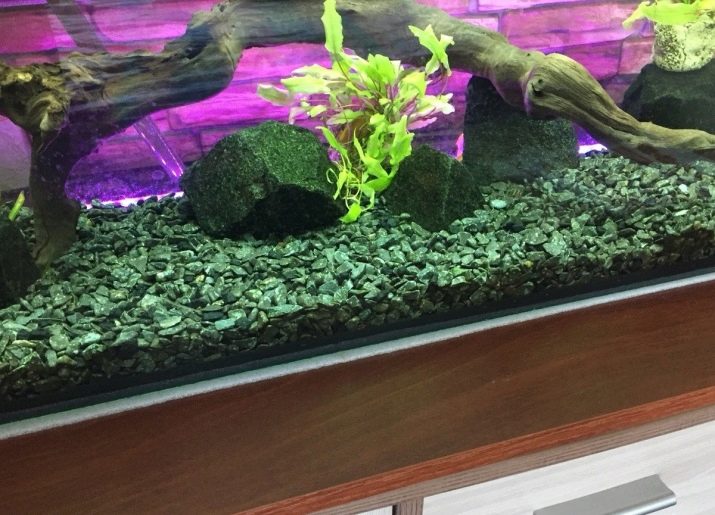
- Priming. Domestic sharks usually pay minimal attention to the ground, they are not prone to digging and picking up food from the floor, only in rare cases. Therefore, the soil can be chosen to your taste, the best option is small pebbles. In addition, many aquarists put dark soil on the bottom, this allows you to effectively beat sparkling fish scales.
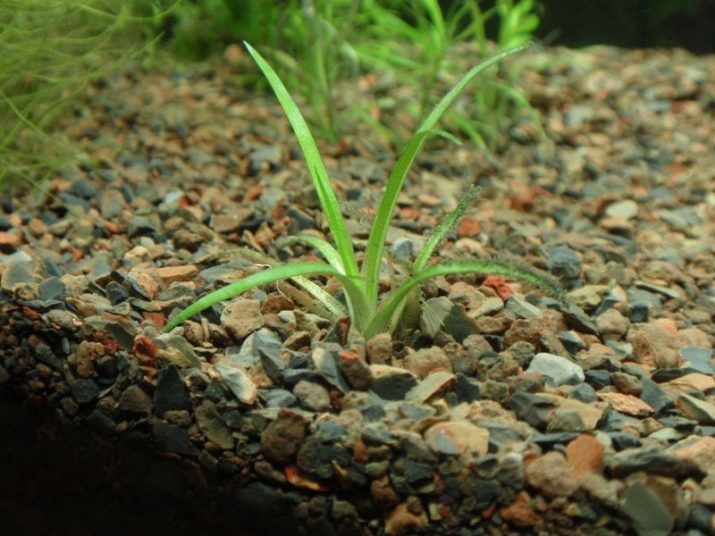
- Shine. Sharks of the ball belong to those types of fish that do not perceive excessive brightness. Therefore, the lighting should be good, but scattered. An excellent solution would be natural sunlight penetrating plants. And you can also put soft phytolamps.

If you adhere to these rules of maintenance and care, then barbus will feel good and will please the owners with a long life.
Proper feeding
For many aquarists who are familiar with fish of different species, it will not come as a surprise that barbecues love to eat. These fish are ready to eat day and night, but you can’t overfeed them. Shark bal food should have several components.
- Plant food. Fish really like chopped spinach, lettuce, zucchini, green peas. Equally supportive of spirulina. The content of vegetable feed should be no more than 10% of the total diet.
- Live and dry food. Many owners prefer to feed the fish with dry mixtures, Tetra has proven itself well here, in this composition there are substances necessary for the fish. But live food must be present in the diet of barbs. A good option would be daphnia, pieces of earthworms, insect larvae, shrimp. But you shouldn’t give bloodworms - barbs can hardly digest it.
Feed the fish in small portions, about three times a day. It is important to choose food that will sink to the bottom slowly, since they eat the ball in the middle layers of water. If the pets have not eaten the offered food within two minutes, the residues are immediately removed so that the water always remains clean.
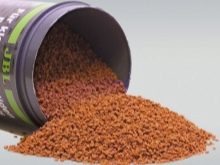
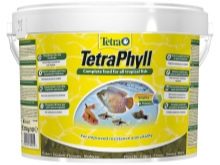
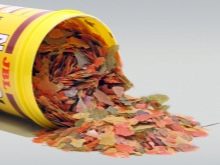
Sexual differences and reproduction
Propagating a shark ball at home is a difficult task even for a professional aquarist. There are several difficulties here:
- fish are reluctant to spawn, on farms they are stimulated with hormones for this;
- both partners must be at least four years old;
- length of parents - not less than 35 cm;
- you need a separate aquarium, the capacity of which will be about 1.5 tons, which will require a huge amount of cash.
But if you have already weighed the pros and cons, and yet decided to try to propagate the ball at home, you need to know all the features of this process. And first of all, the gender characteristics of fish.
We note right away that before the fish reach the age of two years, it will be practically impossible to do this. In the future, a comparison of sizes will help to distinguish a female from a male. Females are larger, they are round, males are physically reminiscent of small torpedoes. Particularly well, the differences are visible only during the spawning period, the rest of the time it will be quite difficult to sort the sex.
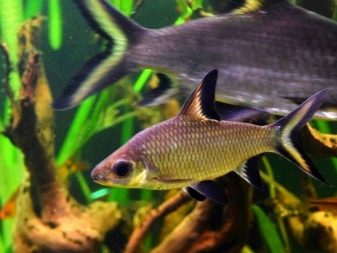

When the pair is already selected, you can start the process itself.
- Arrangement of spawning. Spawning for mating barbs is a capacity of 2 meters in width and 60 cm in depth. The amount of water is 1.5 tons.The liquid must be absolutely clean, in addition, you need to put in filters that provide flow. At the bottom of the tank, Javanese moss is placed, which will be the first home for eggs.
- Running fish. The water is cooled several degrees from the usual fish, and parents are launched inside. Important: a couple of days before the process, the male is intensely fed with food containing protein, while the female receives plant components.
- Spawning. Fish spawn for about a day, during this time the female will lay about 10 thousand eggs. As soon as the spawning process comes to an end, parents need to be released into the general aquarium, and methylene blue should be added to the liquid in the spawning. This remedy will not allow the fungus to develop. In addition, water can be filtered off with charcoal. Every day, half the fluid is replaced with a new one.
- Baby Care. Small barbs will appear in 2 days. They are rapidly increasing and gaining mass. They feed the babies with live dust - these are tiny microorganisms, which necessarily contain a ciliates shoe. If we make sure that each fry receives a sufficient amount of food, then very soon the fish will grow up so much that they can be transplanted into a common aquarium.
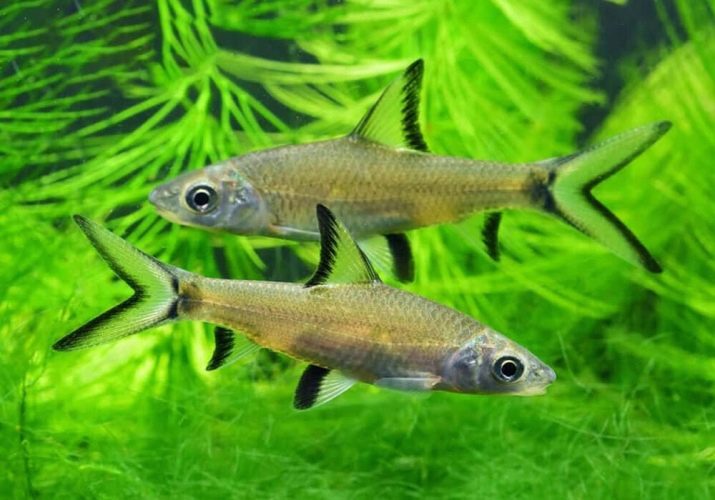
Reviews aquarists
Today, most aquarium owners claim that keeping a shark ball is quite interesting. Having passed the period of adaptation, these fish will start to rush about around the aquarium, and their games can be watched for hours. Barbus owners claim that Pets eat any proposed food, do not differ in aggressiveness, do not attack other fish. Many people like beautiful overflow of scales, which can be observed both in natural and in artificial lighting. In addition, the average price of a barbus is only 300 rubles, and it is in almost every pet store.
However, there are also aquarists in whom the maintenance of aquarium sharks has caused difficulties. Fish grow fast, they need a lot of space, large aquariums. It is difficult to breed individuals, as well as to distinguish from each other. And also some buyers said that barbs are prone to poisoning, hypoxia and obesity.
But here we can only recommend improving the supply of oxygen to the aquarium, replacing water in time, and, of course, not feeding fish in huge portions. These simple tips will help protect small domestic sharks from disease and death.
About the contents of the fish, see the next video.
